The human highlight film
After a half dozen seasons in Atlanta, Dominique Wilkins (seen here playing at the Omni around 1988) emerged as a leader. Ever approachable, he was a hit with fans.
Photograph by Scott Cunningham, courtesy of the Atlanta Hawks
This month, the Hawks begin their 50th season in Atlanta. Yes, we’re still waiting on an NBA championship, but the franchise’s record over that half-century is nothing to scoff at: 33 playoff seasons; four NBA Coaches of the Year; a 60-win season and Eastern Conference Finals appearance in 2015; and a cadre of Hall of Fame legends, from “Pistol” Pete Maravich and Lenny Wilkens to Maurice Cheeks and Tracy McGrady. And, of course, Dominique Wilkins, the Human Highlight Film. “People who think we don’t have a rich history,” says Wilkins, now the team’s vice president of basketball, “have definitely been misinformed.”
Founded in 1949 as the Tri-City Blackhawks of Illinois, the franchise moved to Milwaukee in 1951 before bouncing to St. Louis, where it captured its lone World Championship in 1958, led by power forward and center Bob Pettit. In 1968, Atlanta developer Tom Cousins bought the team (former Governor Carl Sanders also owned a stake) and moved it to Atlanta, where it spent the first four years at Alexander Memorial Coliseum on Georgia Tech’s campus before taking up residence in the Omni. A decade later, the post-Maravich team was struggling to draw crowds. Scott Cunningham, a young photographer and Art Institute of Atlanta student, offered to photograph the team for free. At age 18, he became the official photographer, eventually earning a per-game rate.
This year, the Hawks will take the court in a renovated Philips Arena (named State Farm Arena), the product of two off-seasons of work and $192 million, the majority of which ($142 million) is public funding sourced mostly from car-rental taxes. New attractions: massive video screens, a courtside “club,” less expensive concessions, a Zac Brown restaurant and live-music venue, and a barbershop by Killer Mike. And this season, like the 41 that came before it, Cunningham, 59, will be courtside, with his Nikon cameras linked to strobe lighting in the catwalks above. He’ll also have his portable seat, which has spared his back and knees over the years. That’s not to say the job, from which he has no intentions of retiring, isn’t without hazards. Last year, for instance, Hawks small forward Kent Bazemore flew off the court while going for a block, plowed over Cunningham, and grounded him temporarily with a concussion.
Four decades, four Sports Illustrated covers, and a headful of white hair later, Cunningham couldn’t be more content. “All I’ve ever wanted to do is shoot games. I couldn’t have written it up any better.”
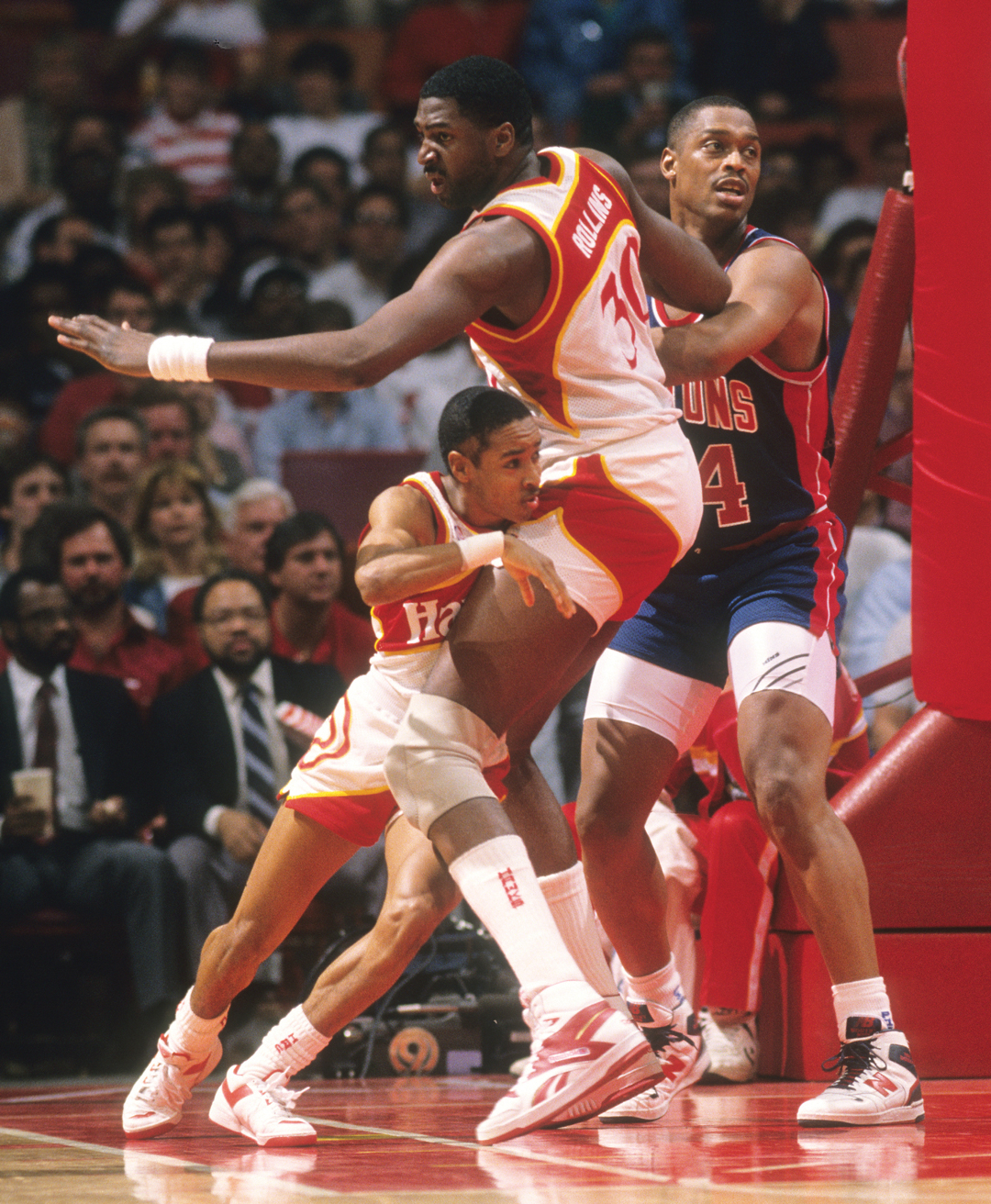
At a home game in 1986 or ’87 against Rick Mahorn and the “Bad Boy” Detroit Pistons, the diminutive, high-flying wonder that is Spud Webb (all 5 feet, 6 inches of him) maneuvers around the Hawks center, 7-footer Tree Rollins. Says Cunningham: “[Webb] could have three guys on him, go up in the air, and get out of it somehow.”
Photograph by Scott Cunningham, courtesy of the Atlanta Hawks
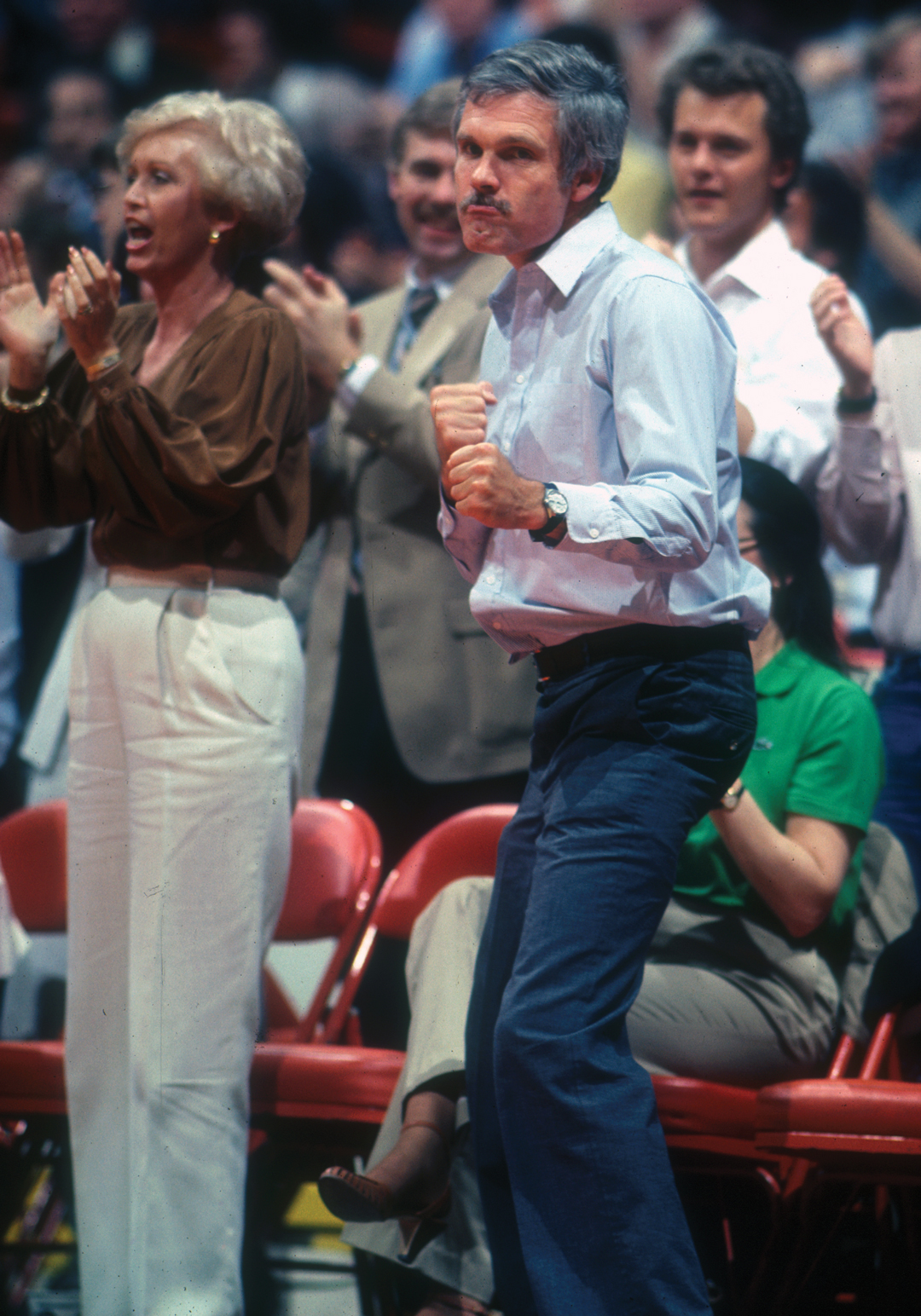
During a contentious series in the early 1980s, Pistons players, including Isiah Thomas, had been taunting Ted Turner, then the Hawks owner. Turner is seen here giving it back to them.
Photograph by Scott Cunningham, courtesy of the Atlanta Hawks
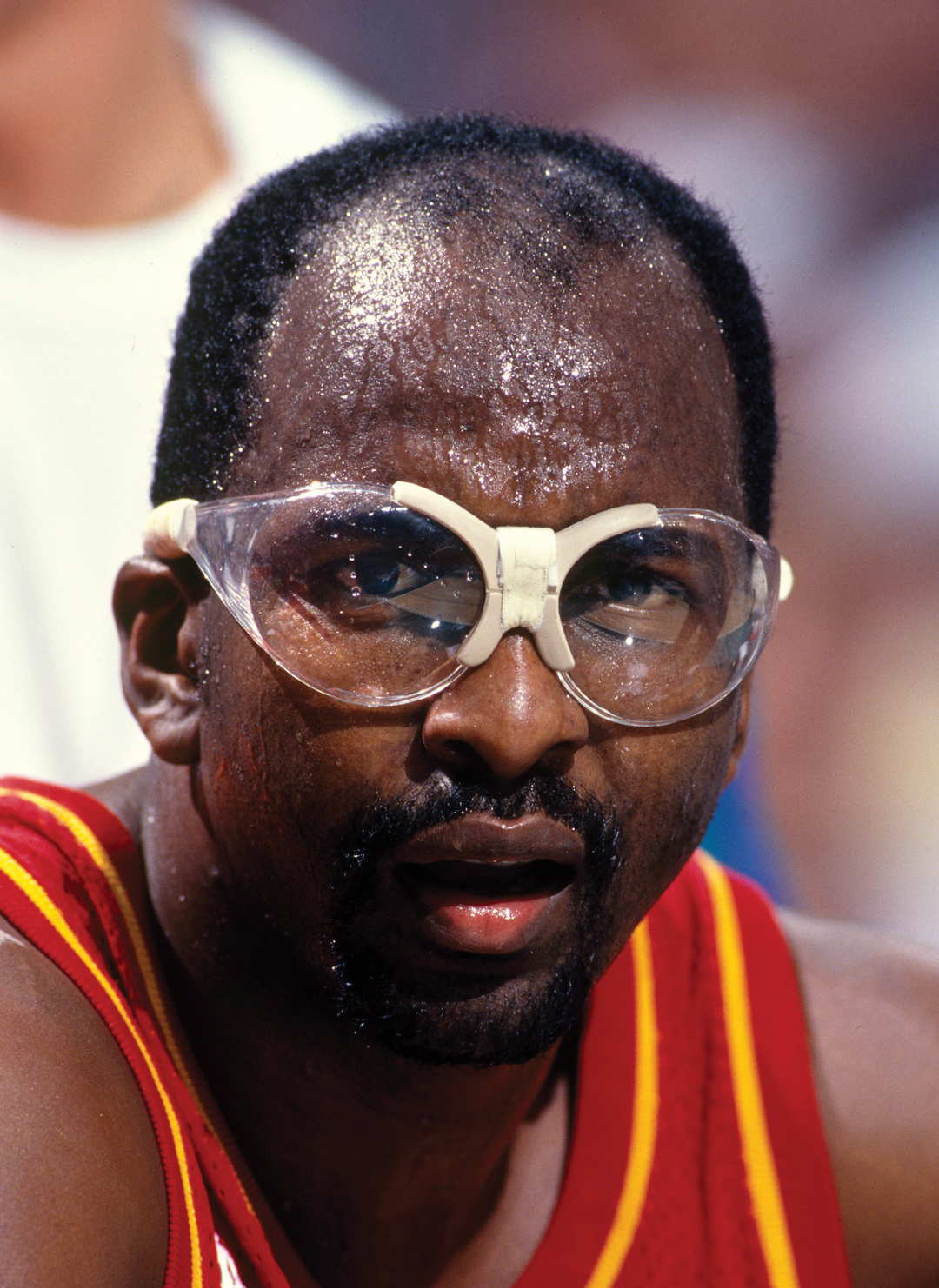
Cunningham shot this photo of center and power forward Moses Malone around 1988. Rumor has it, according to Cunningham, the quiet but humorous big man once tried to stuff coach Mike Fratello in a trashcan after a frustrating loss in Philadelphia. Malone died at age 60 in 2015.
Photograph by Scott Cunningham, courtesy of the Atlanta Hawks
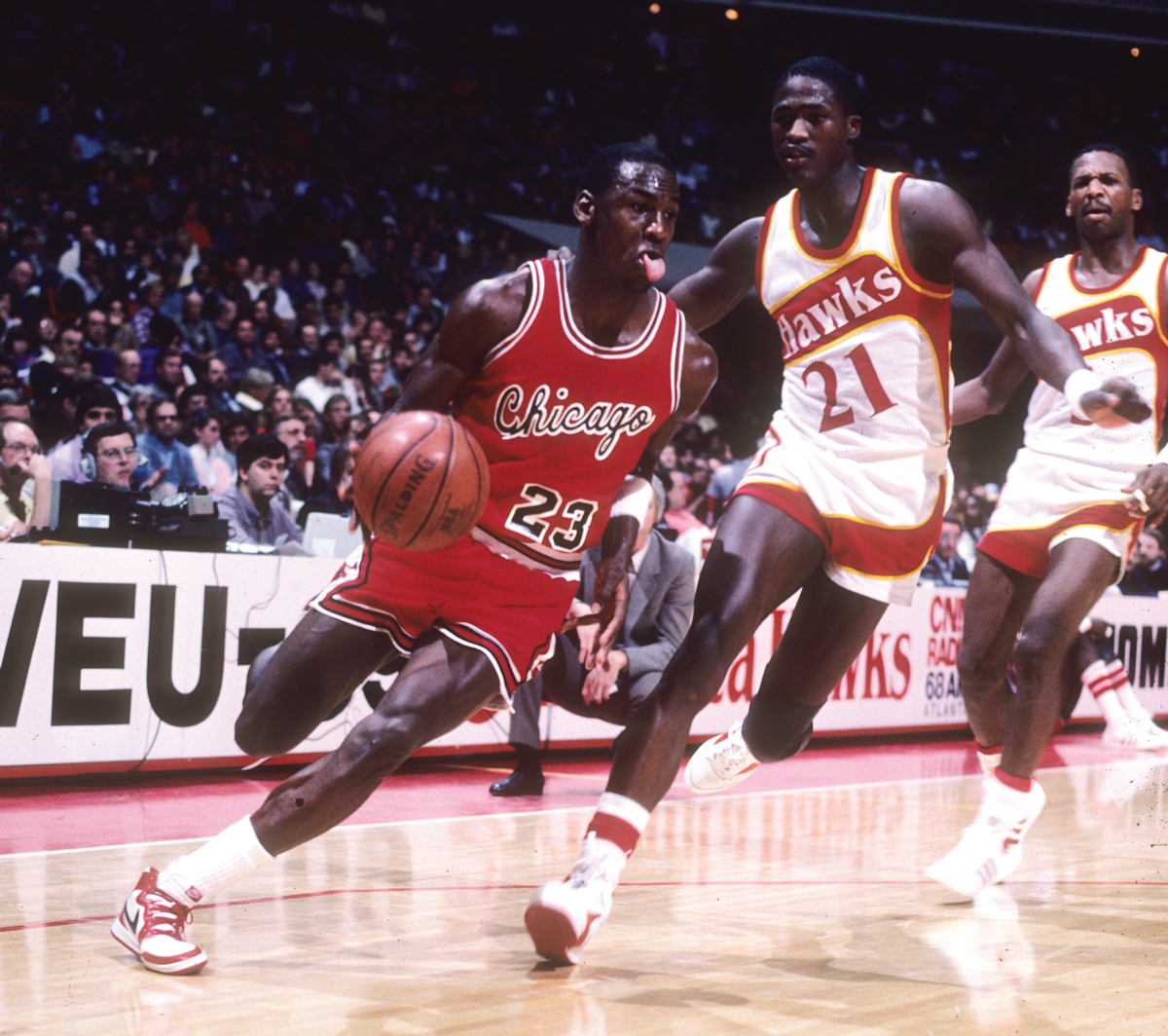
Pictured during Michael Jordan’s rookie season in 1984-1985 are the world’s most celebrated tongue and a baby-faced Dominique Wilkins. Photographing astonishingly fast, gravity-immune players like Jordan and Wilkins was a challenge, Cunningham says. Wilkins “could jump out of the gym—it was insane,” he says. “Dominique definitely woke the city up.”
Photograph by Scott Cunningham, courtesy of the Atlanta Hawks
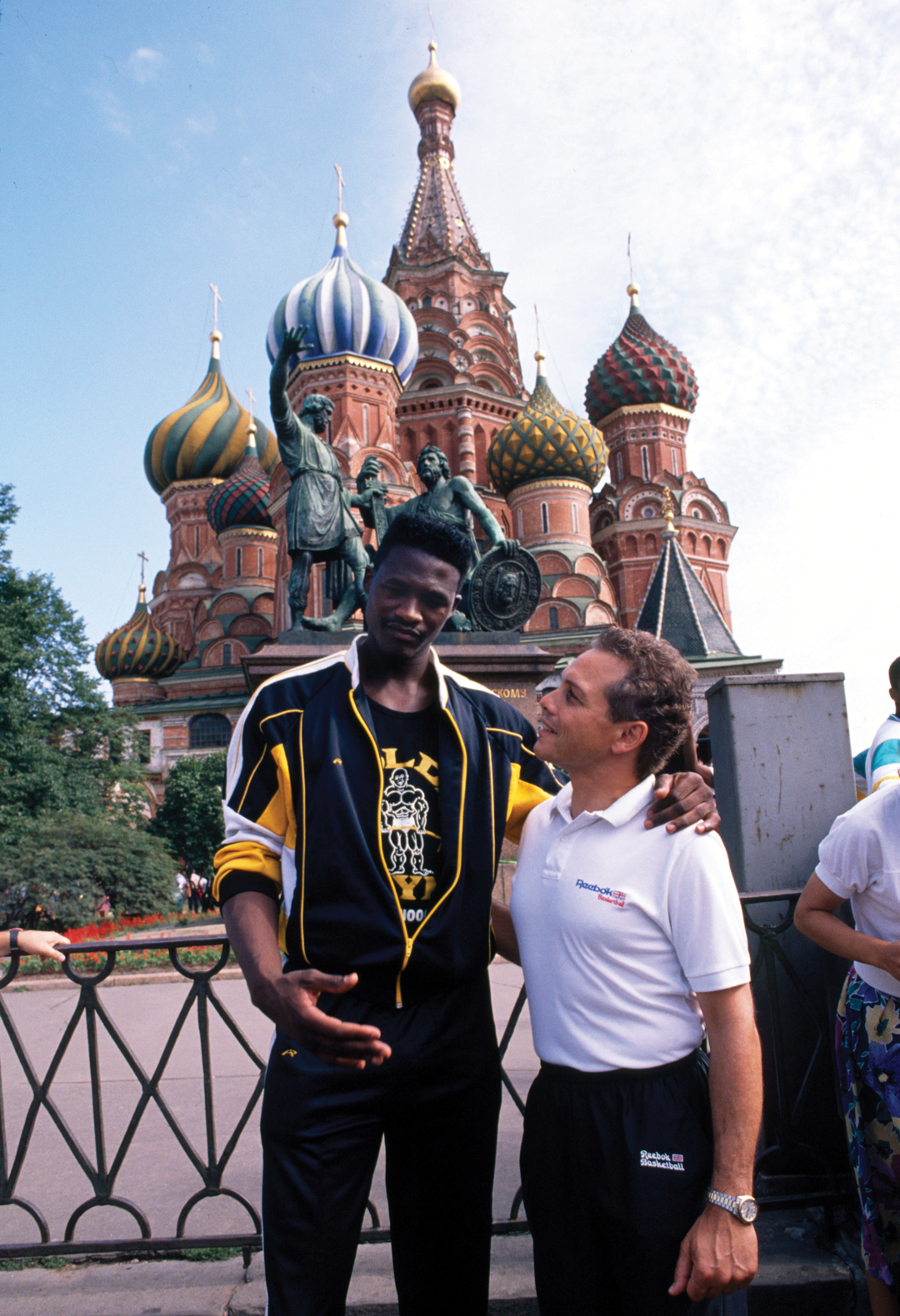
In the summer of 1988, Turner organized three games between the Hawks and the Russian national team in the Soviet Union. Cunningham remembers charter flights with odorous farmers and livestock flies, no air conditioning, and showers without curtains. Wilkins, coach Mike Fratello (pictured), and other players such as Webb, John Koncak, Doc Rivers, and Kevin Willis made the trip, but Turner stayed home.
Photograph by Scott Cunningham, courtesy of the Atlanta Hawks
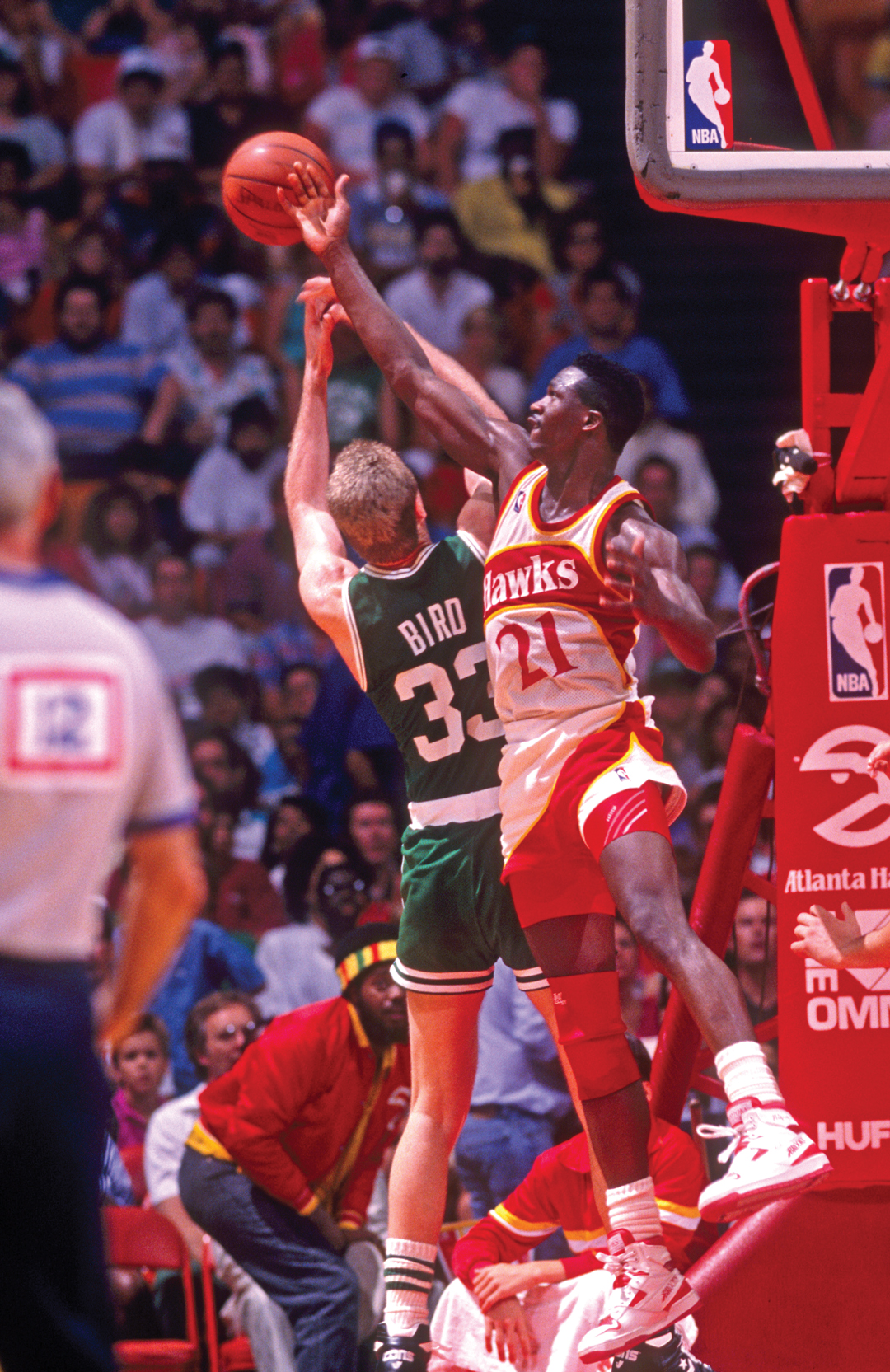
Two NBA icons of the 1980s, Larry Bird and Dominique Wilkins clash (with Nique appearing to win this contest) as “Rasta Man,” a fan fixture at the Omni, looks on from the baseline. “Wilkins played against Larry Bird all of those years, and he never got made to look bad,” Cunningham says. “There was a lot of talking. They went at it.”
Photograph by Scott Cunningham, courtesy of the Atlanta Hawks
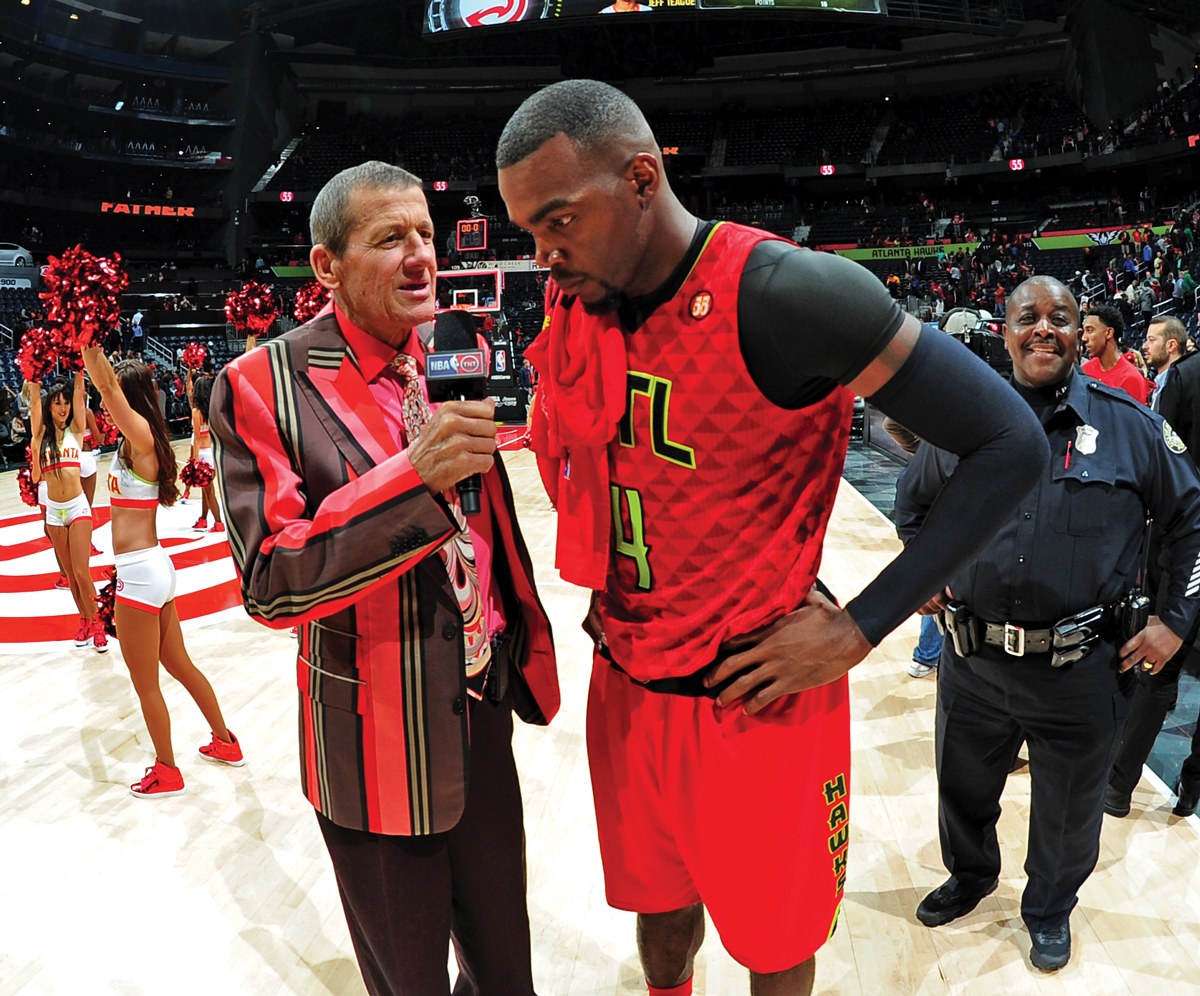
Legendary TV sports reporter Craig Sager interviews four-time All-Star Paul Millsap, who wears the red and “volt green” uniform. Sager, who died in 2016, was among Cunningham’s first friends in Atlanta. When the Hawks hosted an exhibition of Cunningham’s work last year—From the Baseline: 40 Years Beneath the Rim—Sager’s widow offered one of his colorful jackets for the photographer to wear. “I was like, ‘I can’t do it,’” Cunningham says. “I loved him too much.”
Photograph by Scott Cunningham, courtesy of the Atlanta Hawks
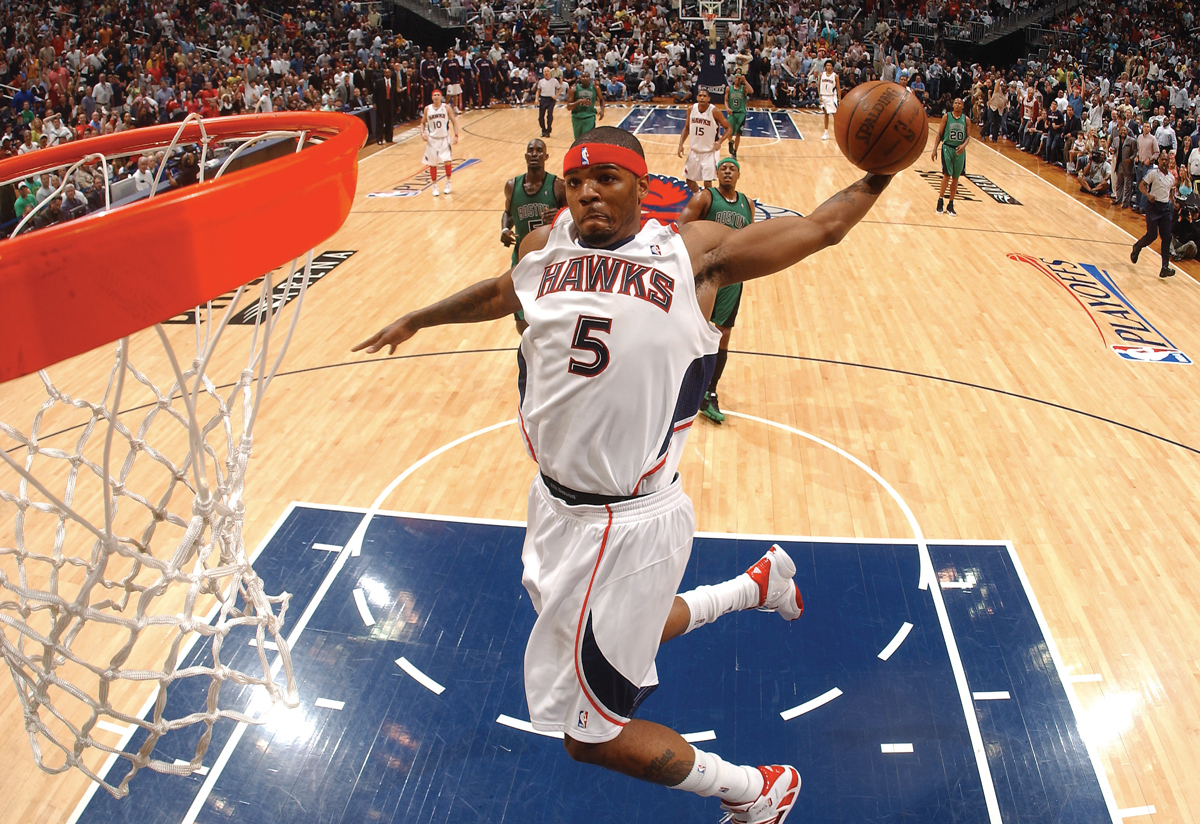
Snapped during a heated 2008 playoff series at home against the Celtics, this photo of Josh Smith deploying his signature claw-hook dunk might be Cunningham’s favorite. The camera was mounted on a stanchion behind the basket, operated by Cunningham via remote control from the opposite end of the court. Like Wilkins did in 1985 and 1990, and Webb in 1986, Smith won the NBA Slam Dunk Contest in 2005.
Photograph by Scott Cunningham, courtesy of the Atlanta Hawks
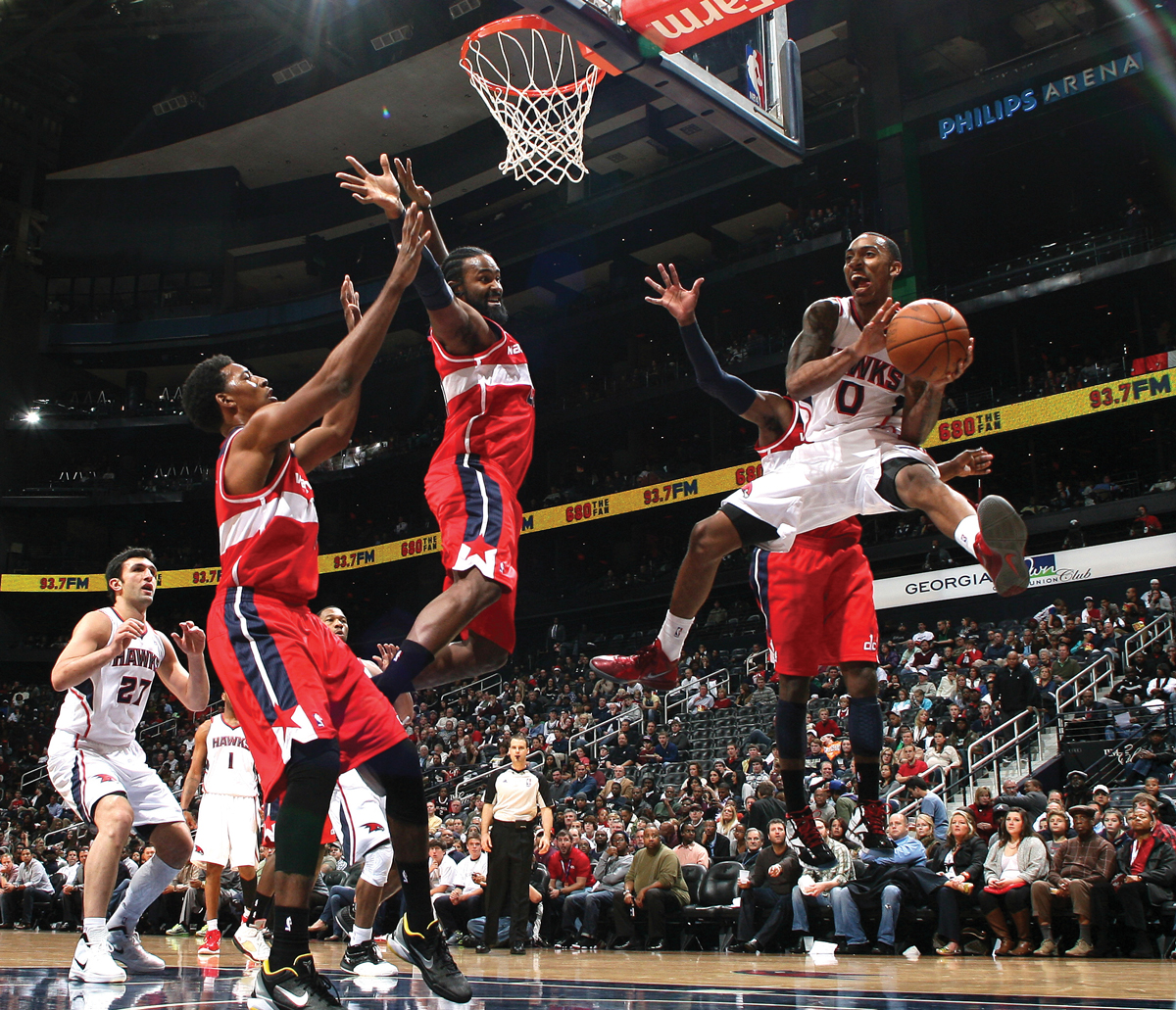
Point guard Jeff Teague and center Zaza Pachulia (at left) compete six years ago during the Hawks’ decade-long stretch of playoff seasons. Cunningham learned to watch Teague’s eyes, which gave clues as to what his next move would be.
Photograph by Scott Cunningham, courtesy of the Atlanta Hawks
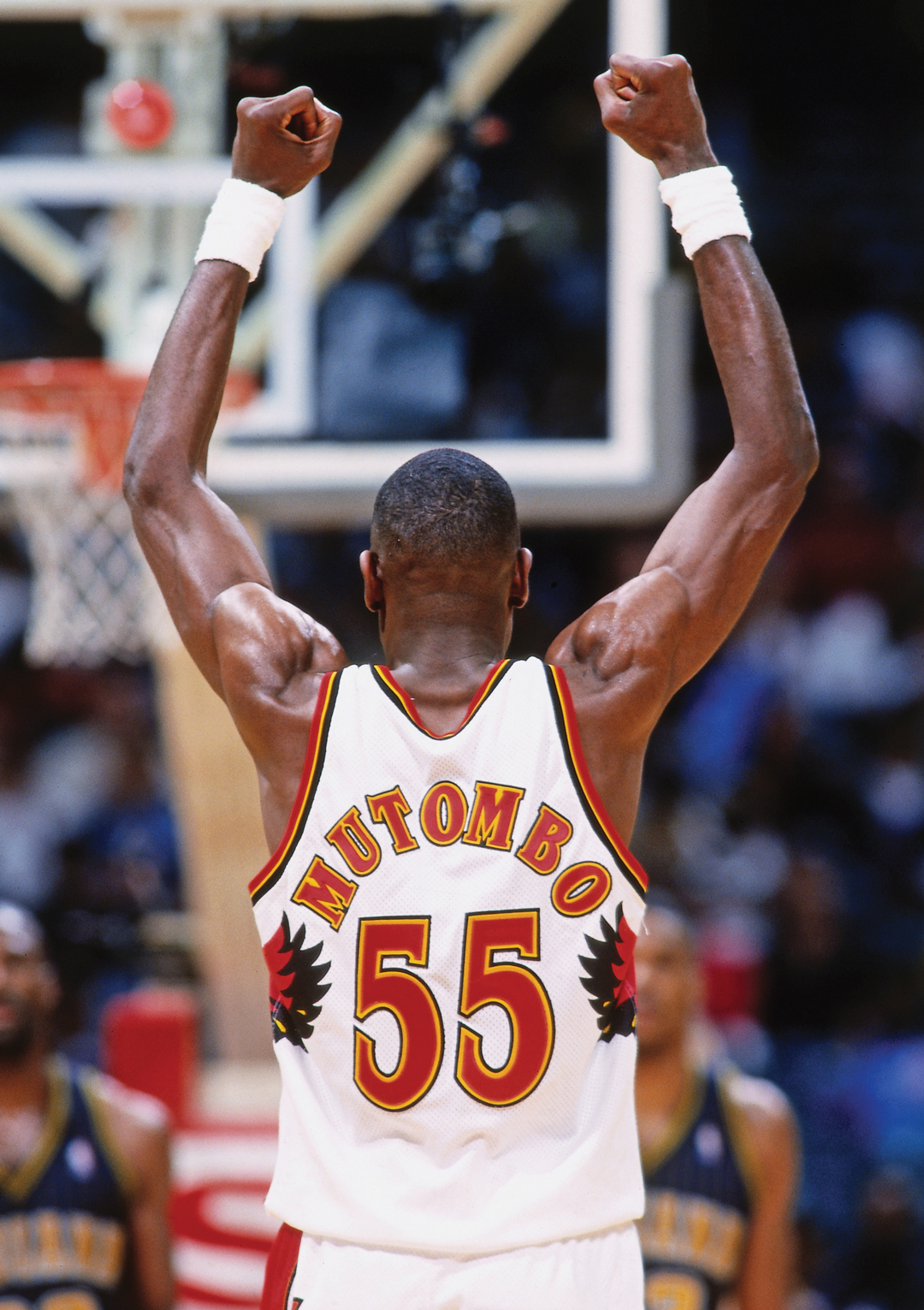
Hall of Fame center Dikembe Mutombo, a Hawk for five seasons, celebrates against the Indiana Pacers in April 1998. “He always showed great emotion out there,” Cunningham says. “The guy would take it to heart so much you thought he would cry if he didn’t do things right. He got everything he had out of his body.”
Photograph by Scott Cunningham, courtesy of NBAE Photos/Atlanta Hawks
This article appears in our October 2018 issue.


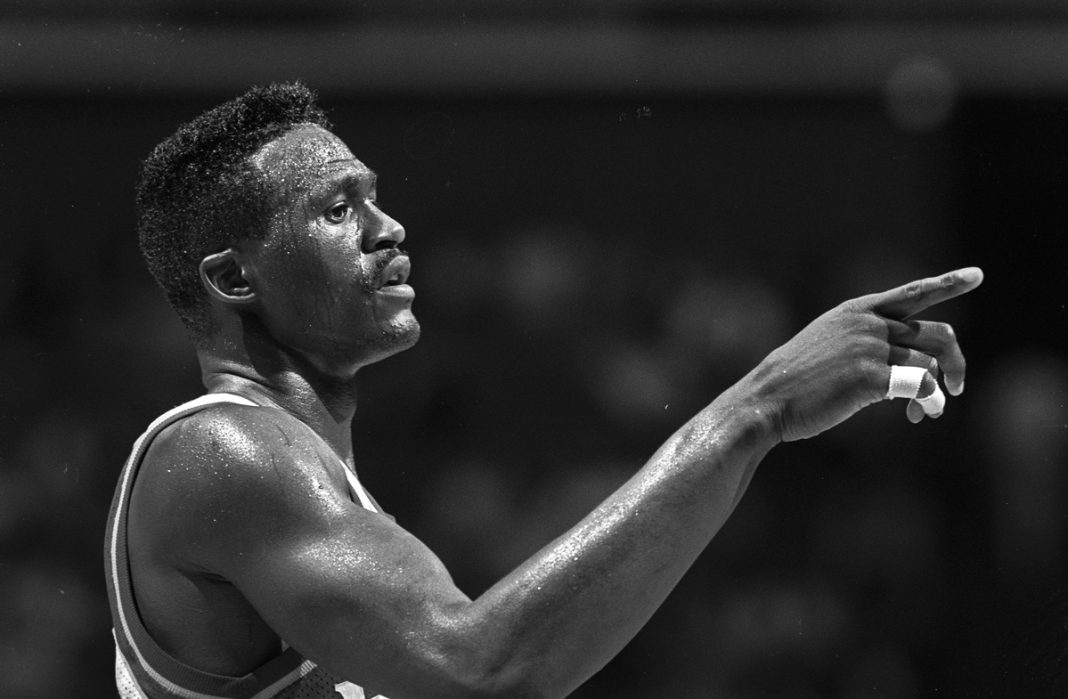







![The North Carolina Museum of Natural Sciences’ newest exhibit is a [pre]historic first](https://cdn2.atlantamagazine.com/wp-content/uploads/sites/4/2024/04/DD-3-100x70.jpg)



